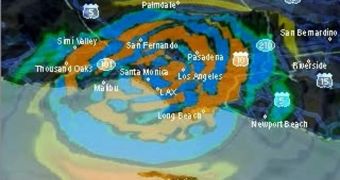Earthquakes are some of the nature's most destructive forces and the main problem about them is that we can't really predict when and where they are going to occur next. Of course, there are fault lines and areas where tectonic activity has been recorded for hundreds of years, but we can't say for sure: tomorrow we will have an earthquake.
If we can't predict them, at least let's watch movies with them. That's what a new supercomputer does: it generates 3-D movies of that shaking ground within 30 minutes of the first jolt and sends them via email to subscribers.
Created by scientists at Caltech and the San Diego Supercomputer Center (SDSC), the computer analyzes data from a network of ground sensors and supercomputers to turn an earthquake into a near real-time animated movie that everyone can watch on their PCs or even on the home cinema system.
Right after the news breaks out, people can expect to receive the 3-D animation and the first one of this kind will be made available to the media by scientists next time a magnitude-3.5 or greater earthquake strikes Southern California-which could be any day now.
Seismic sensors located at hundreds of stations across the earthquake-prone region constantly measure ground motion, delivering valuable information that scientists use to determine the epicenter, the hypocenter and the intensity, explained Jeroen Tromp, a computational seismologist of Caltech who works with SDSC to make the movies.
The data is then fed to the supercomputer, a Dell OnDemand, which transforms them into a movie. The cluster supercomputer is run by open-source Linux operation software and made up of 256 processors. It has a theoretical peak performance of 2.4 teraflops.
"We're getting good performance that will let us cut the time to deliver earthquake movies from about 45 to 30 minutes or less, and every minute is important," Tromp said.

 14 DAY TRIAL //
14 DAY TRIAL //